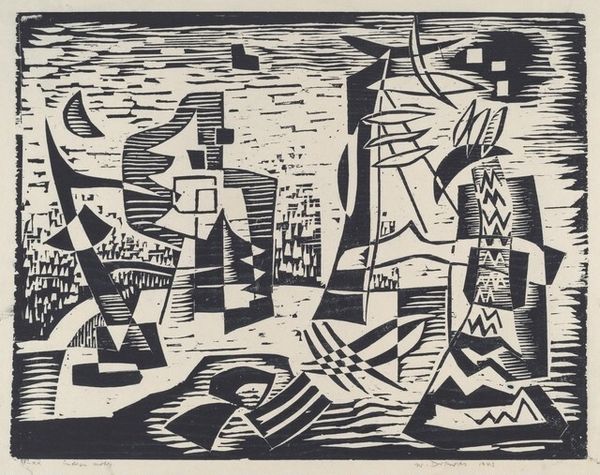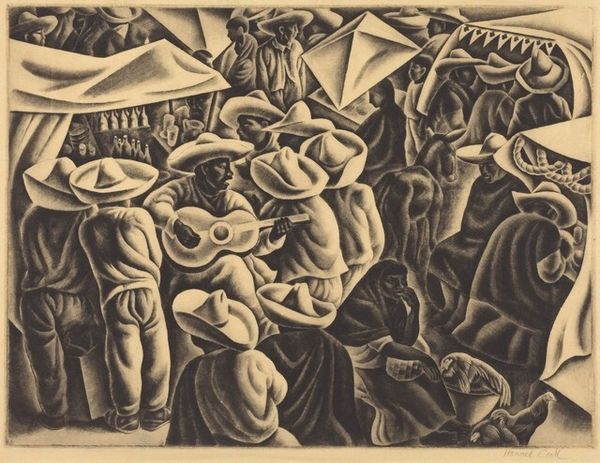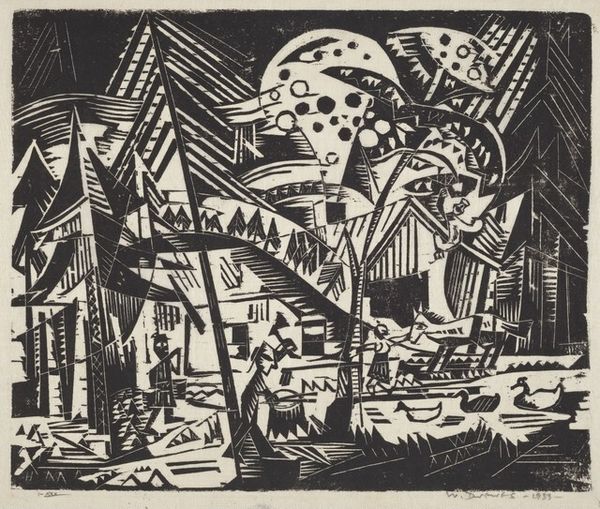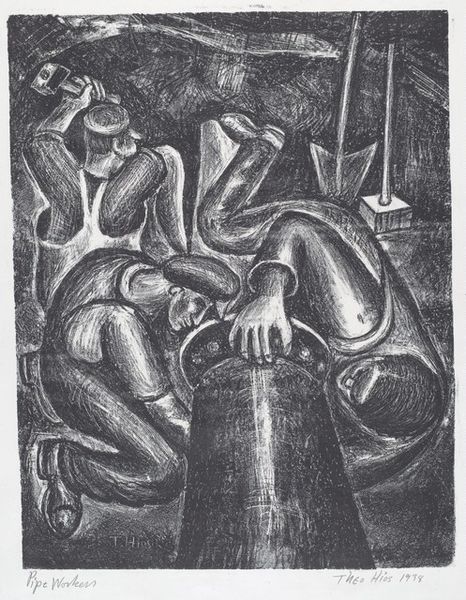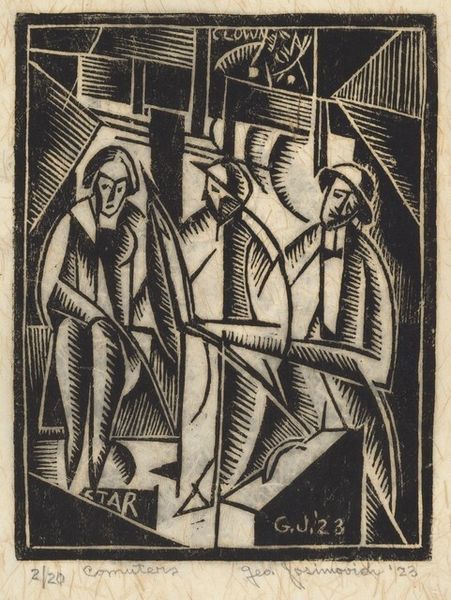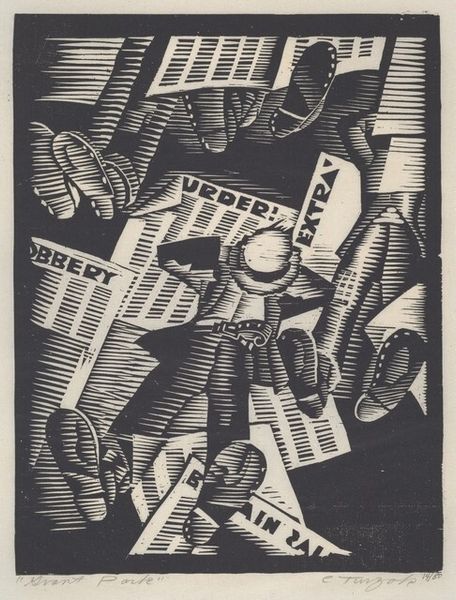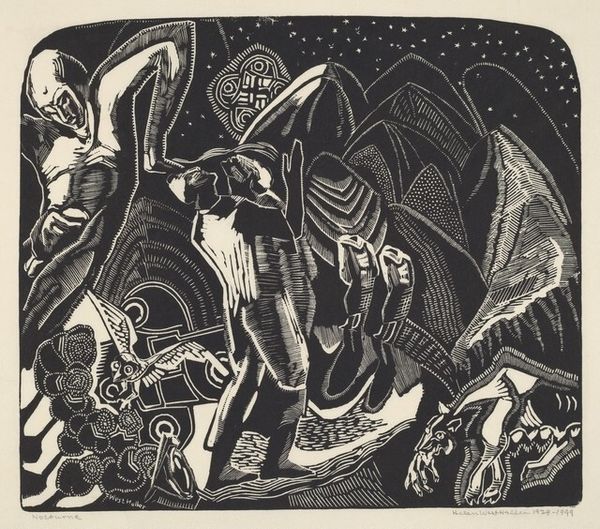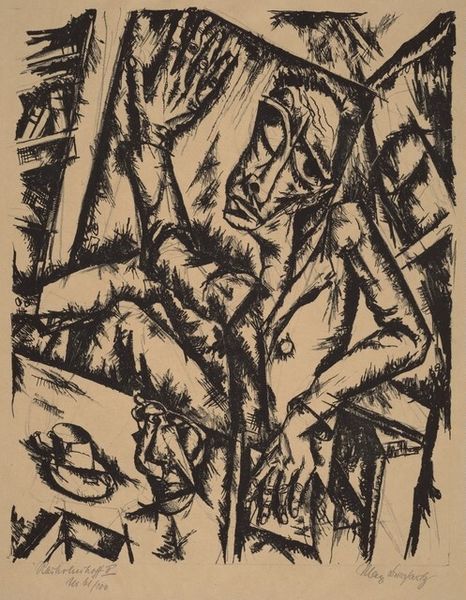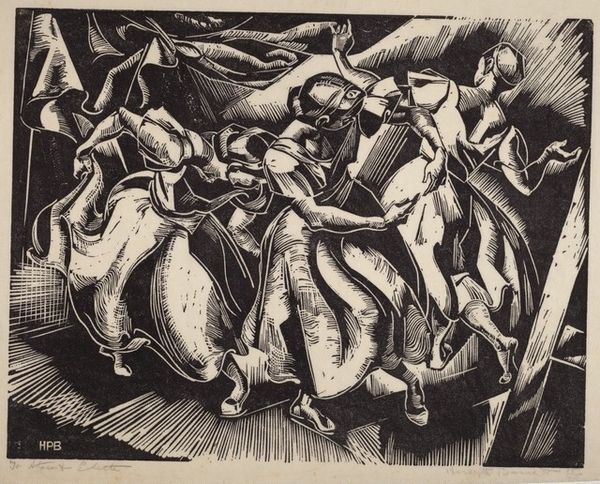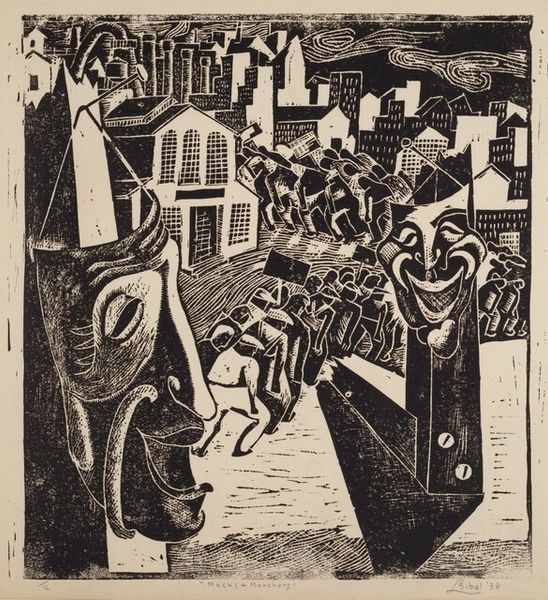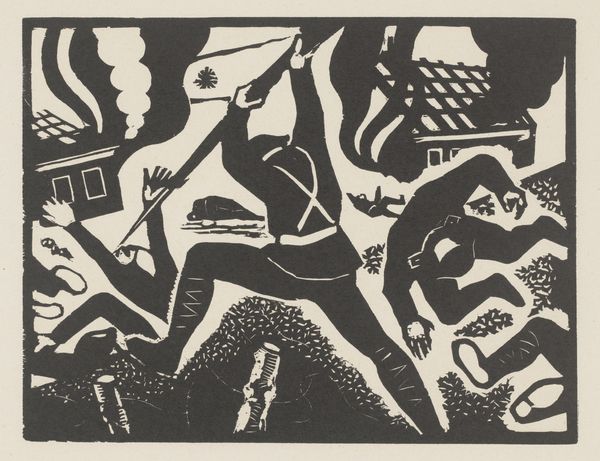
drawing, ink
#
art-deco
#
drawing
#
cubism
#
figuration
#
ink
#
geometric
#
cityscape
#
nude
#
modernism
Copyright: Sandor Bortnyik,Fair Use
Editor: Looking at Sándor Bortnyik’s drawing, *The Dancer*, in ink on paper, what strikes me is how angular it is. It's like a scene from a very stylish, slightly chaotic jazz club. What do you make of it? Curator: As a materialist, I am immediately drawn to the use of ink itself. The stark contrast, the bold lines... Ink was an inexpensive and easily accessible medium. Do you think the choice of ink was intentional, perhaps reflecting the social circumstances or accessibility of art during the interwar period? Editor: That's interesting. I hadn't considered the socioeconomic aspect. The ink does give it a very immediate, raw feel. Could the geometric forms, those fragmented shapes, also be speaking to the fractured social and political landscape of the time? Curator: Absolutely. Think about the mass production influencing daily life, the changing urban environment; those sharp angles could very well be visual metaphors for that rapid transformation and the social anxieties accompanying it. Are we looking at leisure and consumption, a rejection, or a reinterpretation, of "high art" forms and themes? Editor: It’s certainly not the idealized form you'd see in traditional academic art. I see more than one nude, the cityscape outside the window. I like how it depicts everyone inside too: drinkers, dancers and musicians. Curator: What implications do those methods of production and modes of display have on our interpretation? Does this break with convention open it up to new audiences, or does the association with a "lower" material diminish its perceived value? These choices offer very unique insight. Editor: Thinking about it now, the "cheapness" of ink challenges assumptions about value and accessibility. It allows for wider creation and dissemination. It wasn't just about aesthetics but about democratizing art-making itself. Curator: Exactly! Considering art through its materiality – ink, paper, the labor involved – brings it down to earth. A truly revelatory discussion.
Comments
No comments
Be the first to comment and join the conversation on the ultimate creative platform.
